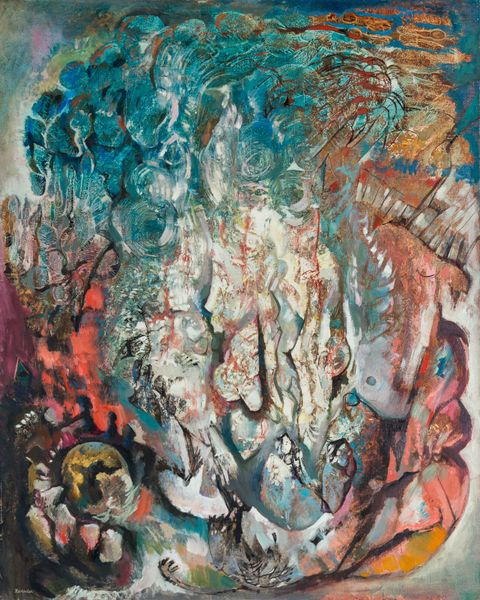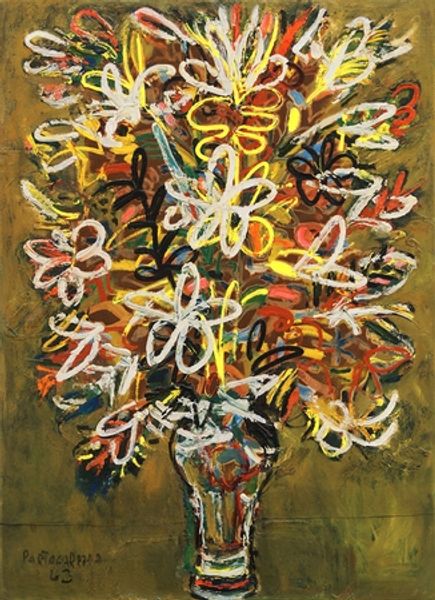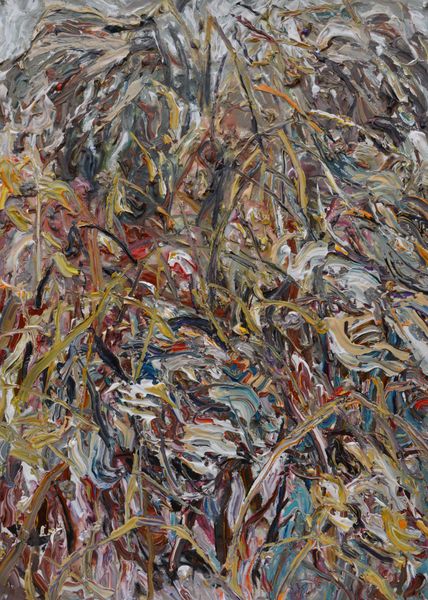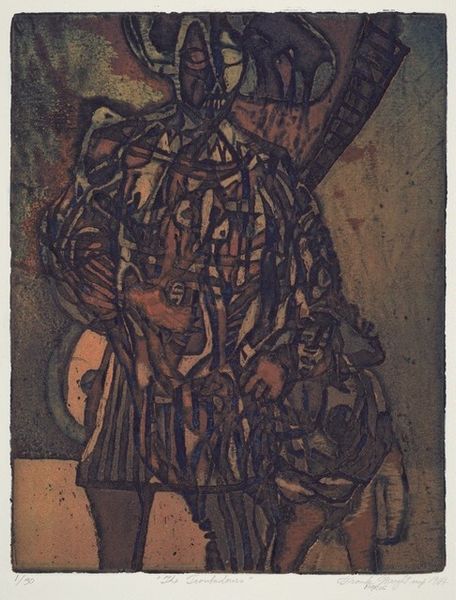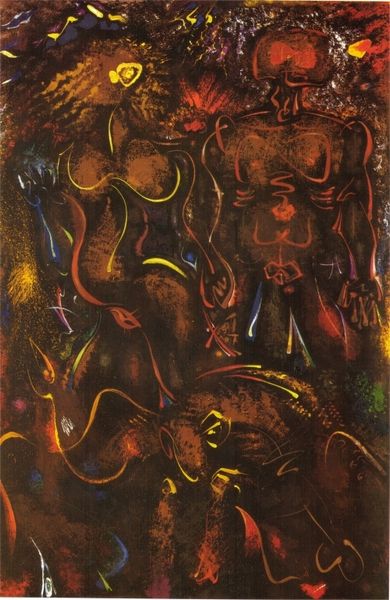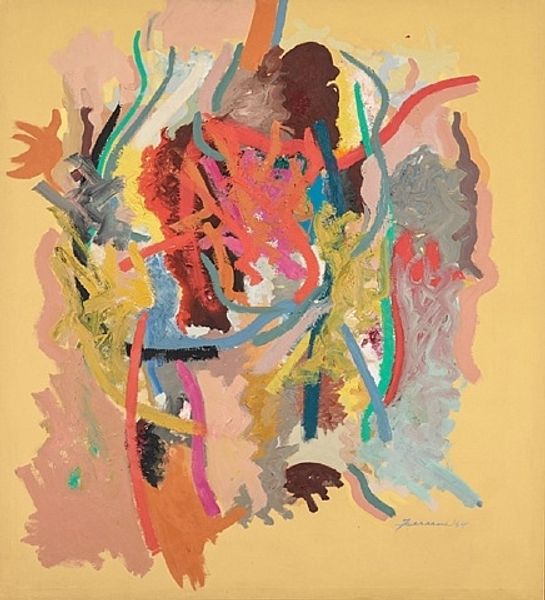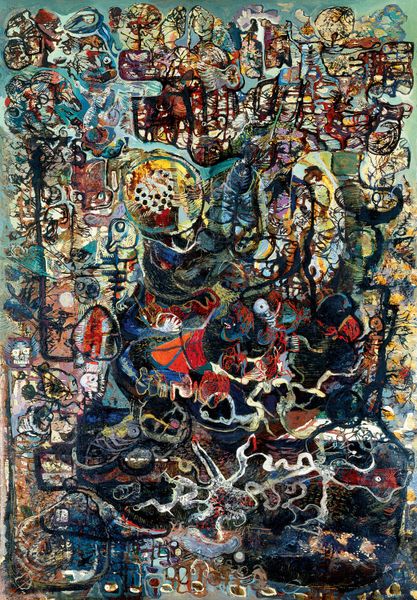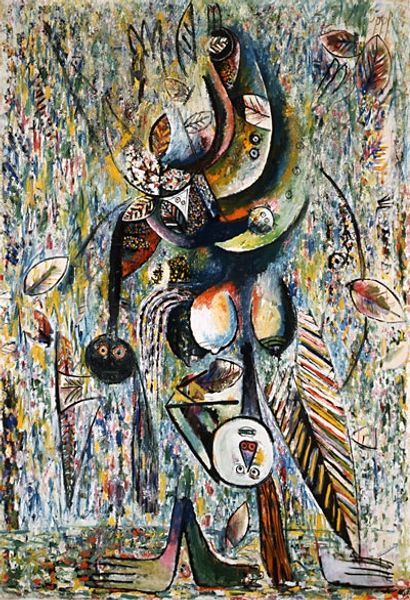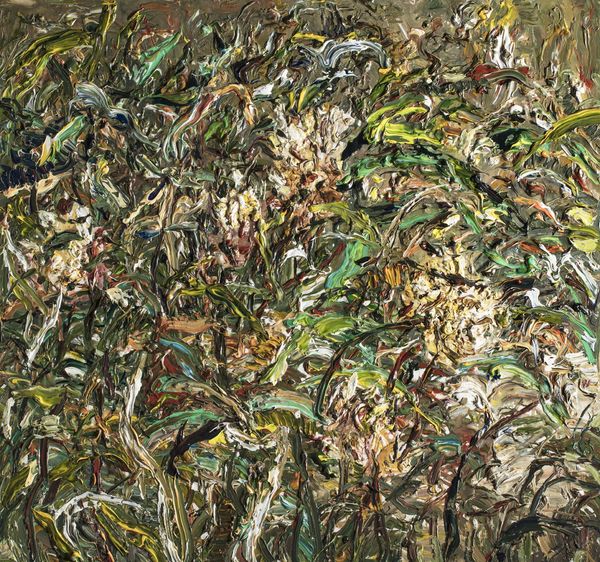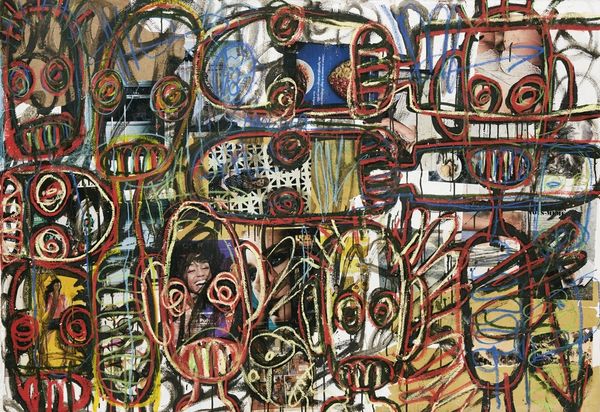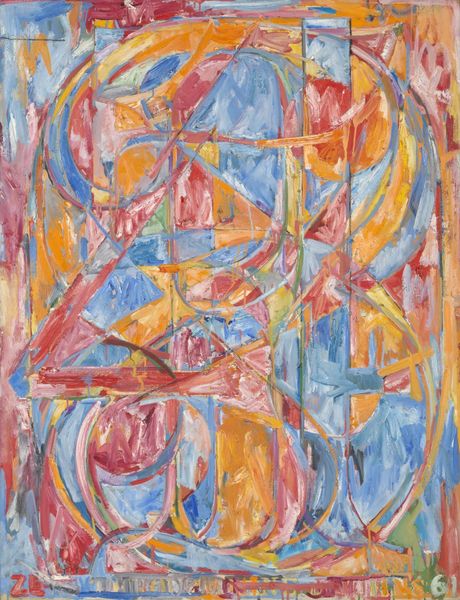
Copyright: Ivan Marchuk,Fair Use
Curator: Standing before us is "Abstraction," a piece created by Ivan Marchuk in the year 2000, rendered with acrylic paint. Editor: Wow, my immediate reaction is... intense. It feels like looking into a whirlwind, but somehow very contained and deliberate. What stands out to you initially? Curator: I’m struck by how this work fits into Marchuk’s broader exploration of abstraction, particularly within the post-Soviet Ukrainian art scene. We see here a fascinating negotiation between individual expression and the lingering influence of socialist realism that defined artistic production for so long. Editor: Absolutely. And the texture! The impasto is really remarkable. You can almost feel the energy of the artist building up the surface, layer by layer. Look how those sharp angles and twisting lines create this dense, almost sculptural effect, wouldn’t you agree? The materials tell their own story of process, it seems. Curator: Indeed, and that density, that layering, could be seen as a visual metaphor for the complexities of cultural memory and the construction of identity. How do we negotiate the weight of history, the multitude of narratives that constitute who we are? Marchuk seems to be asking those very questions here. Editor: That’s interesting, given the role acrylic paint played as an affordable and accessible medium after the fall of the Soviet Union. Maybe his choice of material underscores a break from more traditionally valued art materials like oil, connecting to broader socioeconomic shifts within the art world, and enabling new avenues of artistic expression. It enabled more people to make art. Curator: That's an astute observation! And looking at the geometric forms battling for dominance within the composition, you could argue they mirror the fragmented political landscape of that era. It’s modernism colliding with the expressionism. Editor: What a puzzle. I feel like if I spent long enough looking at it, I'd start picking out certain shapes that might trigger some more associative meaning. I like that idea though, its visual and cultural layers. It gives much more to contemplate. Curator: Yes, I feel similarly. It resonates with Ukrainian history, doesn't it? Editor: The materiality of this acrylic helps carry these ideas and references from modernism. All those different elements within one visual form creates a strong sense of feeling to this art piece, to be sure.
Comments
No comments
Be the first to comment and join the conversation on the ultimate creative platform.
